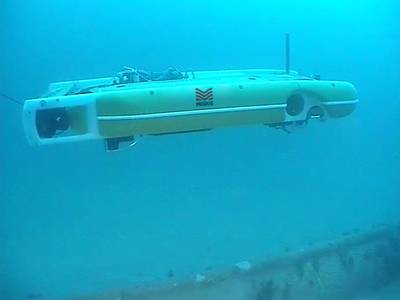Hybrid AUV Completes Depth of Burial Survey for Offshore Wind Farm
Modus Seabed Intervention completed a high speed bathymetric and depth of burial survey of the inter array cable routes on the innogy operated Gwynt-y-Môr offshore wind farm, using the Modus HAUV-2 (Hybrid Autonomous Underwater Vehicle) .
The Gwynt-y-Môr Offshore Wind Farm comprises 160 Siemens (SIEMENS.NS) 3.6MW WTGs located approximately 8 miles from the North Wales coast in Liverpool Bay in water depths ranging between 12m and 28m. The WTG’s are connected by 161 inter array cables which total circa 147km in length. The worksite is known for high subsea currents, so any solution had to cope with current up to 2kts.
Modus mobilized its HAUV-2 system, equipped with Optimal Ranging Orion Cable Tracking System and dual head R2Sonic 2024 Multibeam Echosounder, on the chartered DP2 vessel “Noordhoek Pathfinder”. The inherent power and stability of HAUV-2 provides unrivalled high current workability and the system operated throughout the local tidal cycle. Despite the high currents experienced, survey speeds achieved were approximately four times faster than incumbent ROV based solutions.
Having already performed numerous oil and gas scopes, Gwynt-y-Môr was the first complete OWF inter array survey performed by HAUV-2 and it demonstrated the benefits such a system can offer this industry sector. As well as the high current capability, the HAUV (unlike incumbent AUV systems) can hover and can interchange sensors on the vehicle, which ensures system flexibility to change tasks, for example the HAUV can combine depth of burial survey with structure inspection activities to offer further synergy savings in these challenging environments.
This work was critical for the maintenance and operation of the wind farm. Given the crucial importance of electricity to people’s day-to-day life, energy providers have continued working throughout COVID 19 lockdown to keep the lights on. Gwynt y Môr Offshore Wind Farm generates enough renewable electricity to meet the equivalent needs of approximately 400,000 average UK homes. It was imperative that those working on the project adopted the highest standard of hygiene and cleanliness and followed government guidelines at all times.







